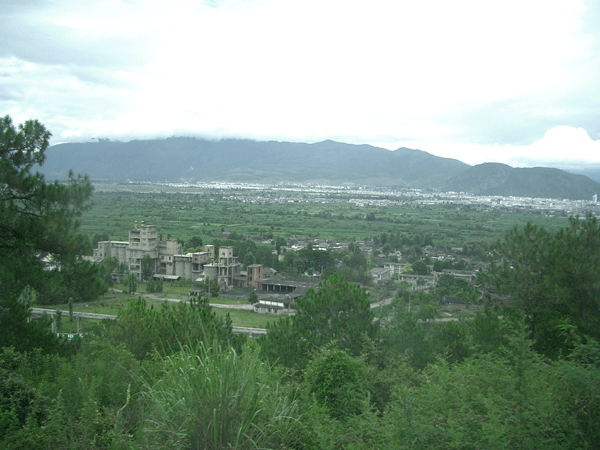


|
|
|
Numerous Koi (fish) swim around in the quieter parts of the streams of Lijiang. They and the aquatic grasses (not very visible on this photo) are put in by the local government.
Entrance to Lijiang
The Baishui River is diverted into many branching canals. Since the city is constructed on a slope, these canals are more like running streams. The water quality is not as good as before but is still good enough for restaurants to keep their clams in. Yes they are edible!
Planks crossing the canals into shops and houses. Canals are almost as numerous as the endless alleys in Lijiang. There are no good maps of Lijiang's alleys. Make sure you know where you are going, or speak Chinese. Or else you will sure get lost in the maze of alleys. The Market Square (Sifang Jie) is the best landmark in town. A good way to keep track of where you are going is go only upstream or downstream, i.e. follow the direction of the stream network.
This is a monument commemorating the inclusion of Nakhi Nation into China's Ming Dynasty (as a Chinese Protectorate). The Nakhi Language (a Tibeto-Burmese language) is still spoken by the local Nakhi. The Chinese Empire, during its many dynasties, include many small kingdoms that were protectorates. These kingdoms managed all their domestic affaires but need to support the Emperor in times of war. These alliances often shifted but the Nakhi kingdom is well-known for their loyalty to the Ming Dynasty.
A typical house in Lijiang, the owner named this house "Harmony House"
Beside the walls of the Palace
People of Lijiang have really nice gardens. People who live next to the canals all have willows by the streamside
Garbage collection truck, the only motorized vehicle allowed in Lijiang. The vehicle plays a tune, and people take out their garbage when they hear it. That means no garbage is let sitting on the streets and alleys at any time, which means no smell. There are NO vehicles in Lijiang other that this one, really. I haven't seen one for days. People, including tourists, are remarkably good citizens in the city, especially compared to other Chinese cities. Our guide told us maybe it's because most people in Lijiang were born and raised locally, Lijiang is their real home. In other Chinese cities, many just live there to make a living and they don't really care about their adopted city |
||